ERR_CONNECTION_CLOSED | 4 Proven Ways to Fix it
Get Free Scanner and check your computer for errors
Fix It NowTo fix found issues, you have to purchase the full version of Combo Cleaner. Free trial available. Combo Cleaner is owned and operated by Rcs Lt, the parent company of PCRisk.com read more.
How to Fix ERR_CONNECTION_CLOSED Error in Chrome
The ERR_CONNECTION_CLOSED error usually occurs due to a temporary glitch and goes away after reloading the page. However, if you’re constantly getting this error, follow the instructions in this article to fix it permanently.
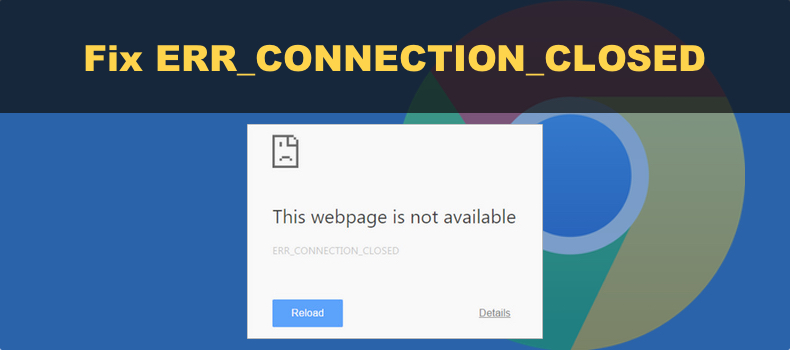
This web page is not available
ERR_CONNECTION_CLOSED
What Causes This Error?
The ERR_CONNECTION_CLOSED error in Chrome means that there’s an issue with the connection from your device to the website, i.e., the connection has been interrupted.
Our research has revealed that ERR_CONNECTION_CLOSED mainly occurs due to misconfigured network devices and mismatched server certificates.
Before applying our fixes, try resetting or power-cycling your Internet router, disabling your VPN service (if you use one), disabling your Chrome extensions, and updating Google Chrome. If doing these things didn’t help, try the solutions below.
Video Instructions on How to Fix ERR_CONNECTION_CLOSED in Chrome
Table of Contents:
- Introduction
- Method 1. Clear Google Chrome Cache
- Method 2. Change DNS Server Address
- Method 3. Reset TCP/IP Settings and Flush DNS Cache
- Method 4. Disable Proxy Server
- Video Instructions on How to Fix ERR_CONNECTION_CLOSED in Chrome
Download Computer Malware Repair Tool
It is recommended to run a free scan with Combo Cleaner - a tool to detect viruses and malware on your device. You will need to purchase the full version to remove infections. Free trial available. Combo Cleaner is owned and operated by Rcs Lt, the parent company of PCRisk.com read more.
Method 1. Clear Google Chrome Cache
1. Open Google Chrome.
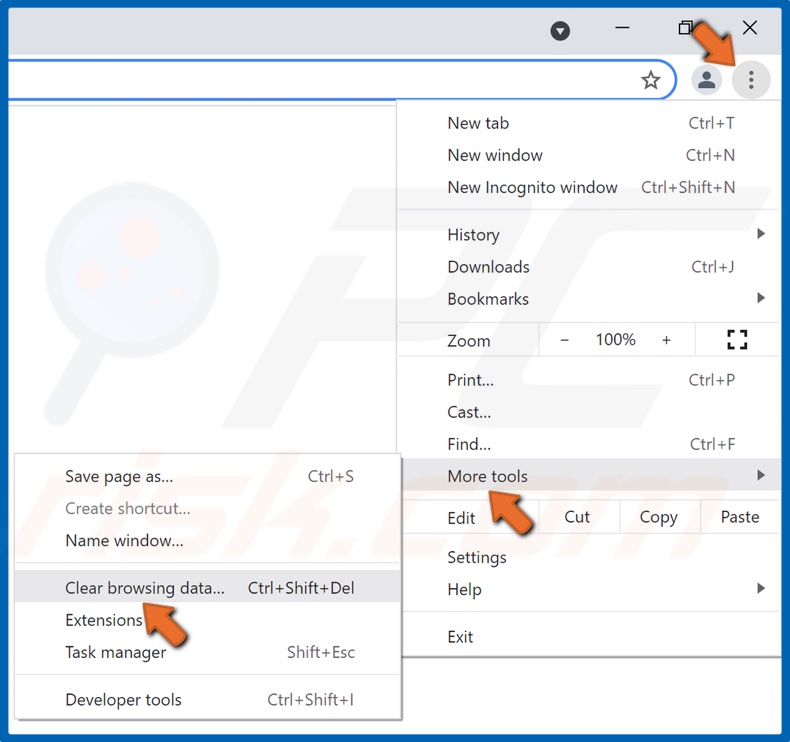
2. At the top-right corner, click the ellipsis, select More tools, and click Clear browsing data.
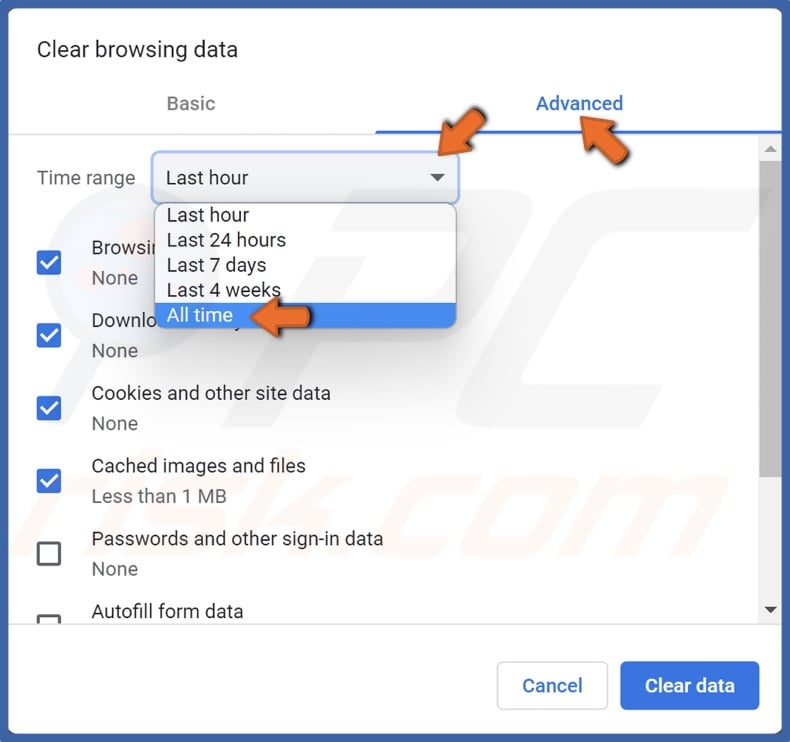
3. Select Advanced.
4. Open the Time range drop-down menu and select All time.
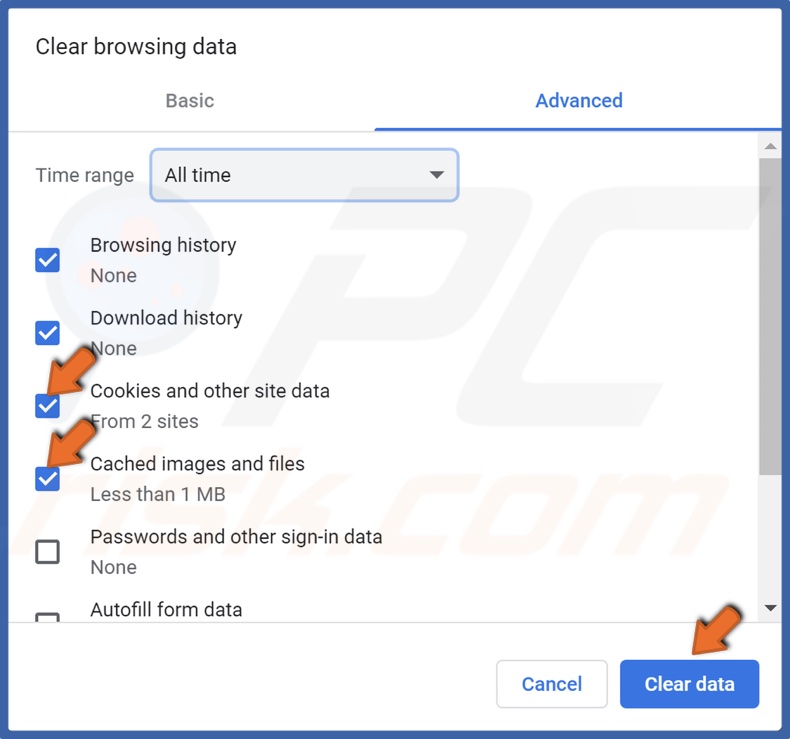
5. Mark the Cookies and other site data, and Cached images and files checkboxes.
6. Click Clear data.
Method 2. Change DNS Server Address
1. Hold down Windows+R keys to open Run.
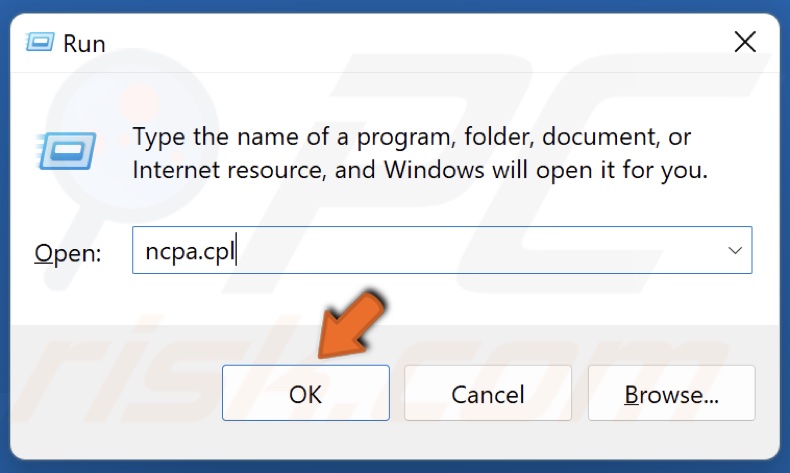
2. In the Run dialog box, type in ncpa.cpl and click OK.
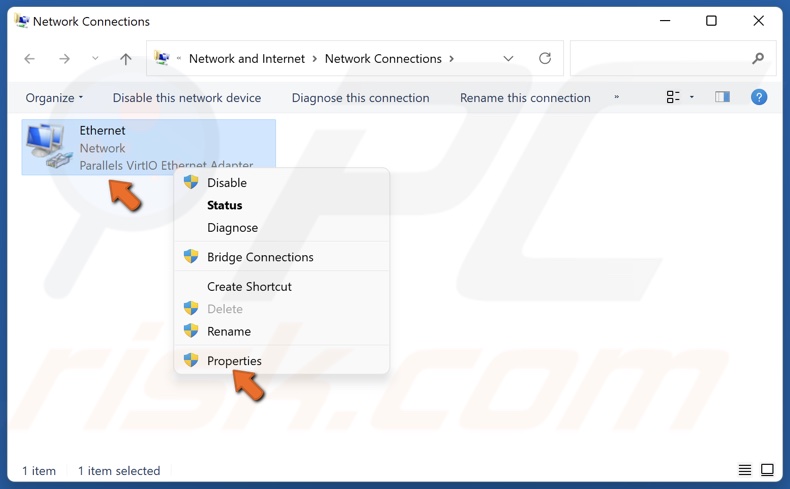
3. Right-click your network adapter and click Properties.
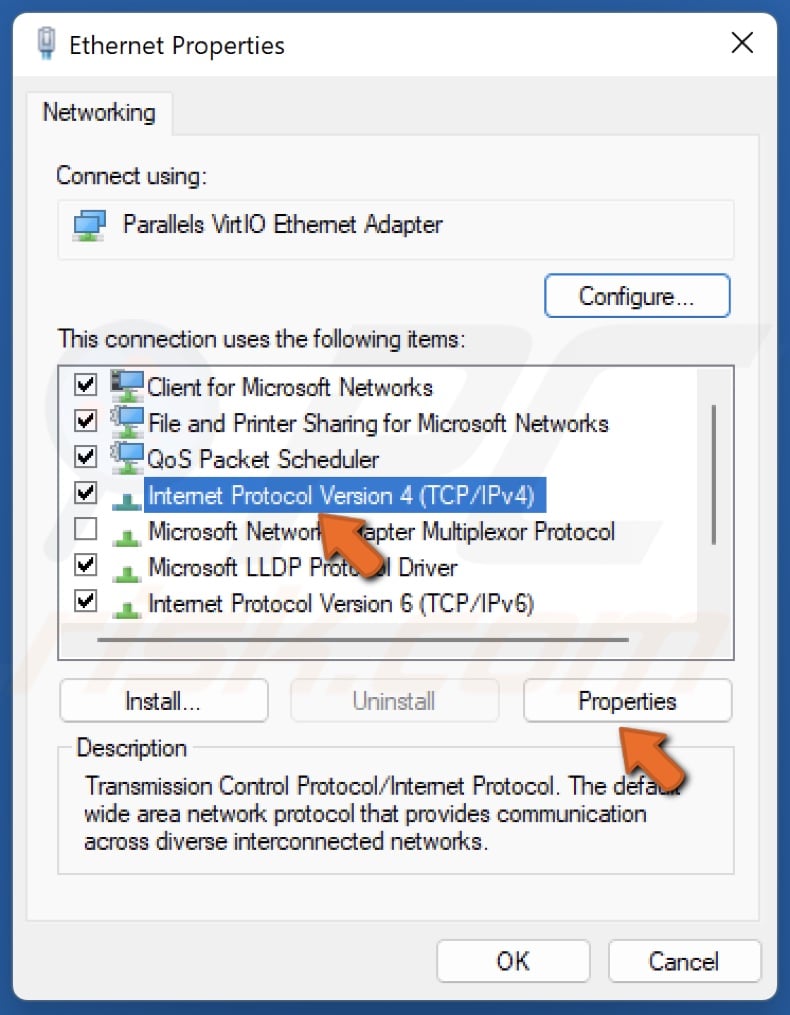
4. Select Internet Protocol Version 4 (TCP/IPv4) and click Properties.
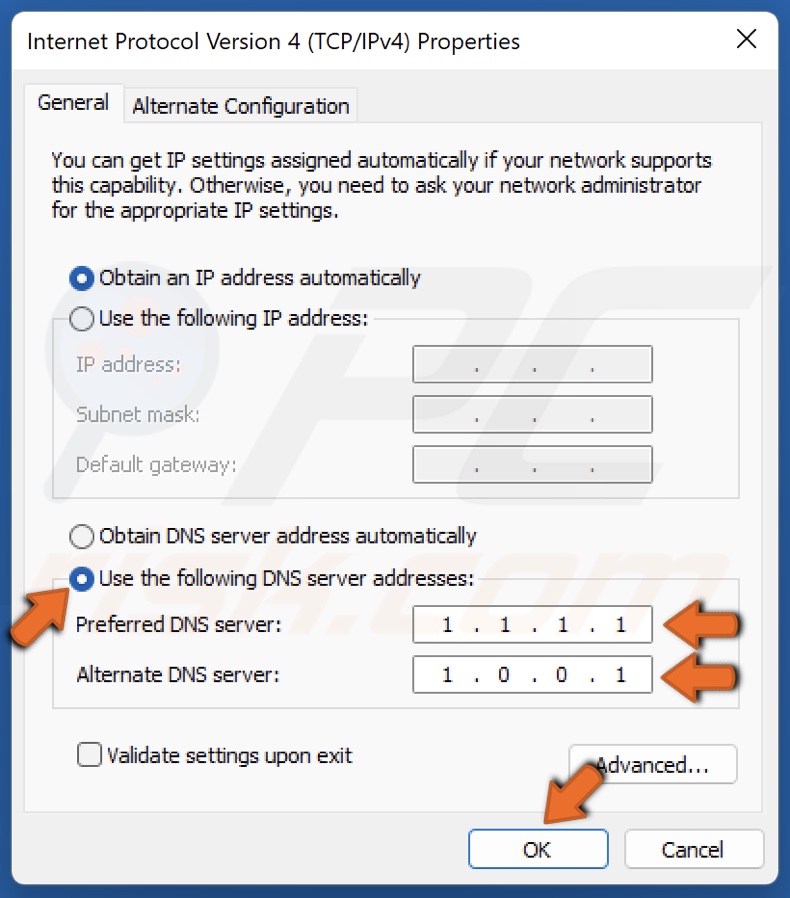
5. Tick the Use the following DNS server addresses option.
6. In the Preferred DNS server, type in 1.1.1.1
7. In the Alternate DNS server, type in 1.0.0.1
8. Click OK to save settings.
9. Restart your PC.
Method 3. Reset TCP/IP Settings and Flush DNS Cache
1. Hold down Windows+R keys to open Run.
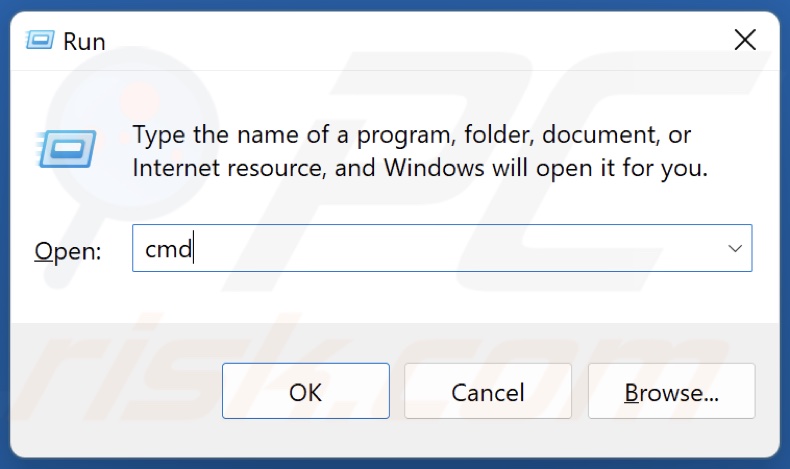
2. In the Run dialog box, type in CMD and hold down Ctrl+Shift+Enter keys to open Command Prompt as an administrator.
3. In the Command Prompt window, type in the commands below and press the Enter key after typing in each one.
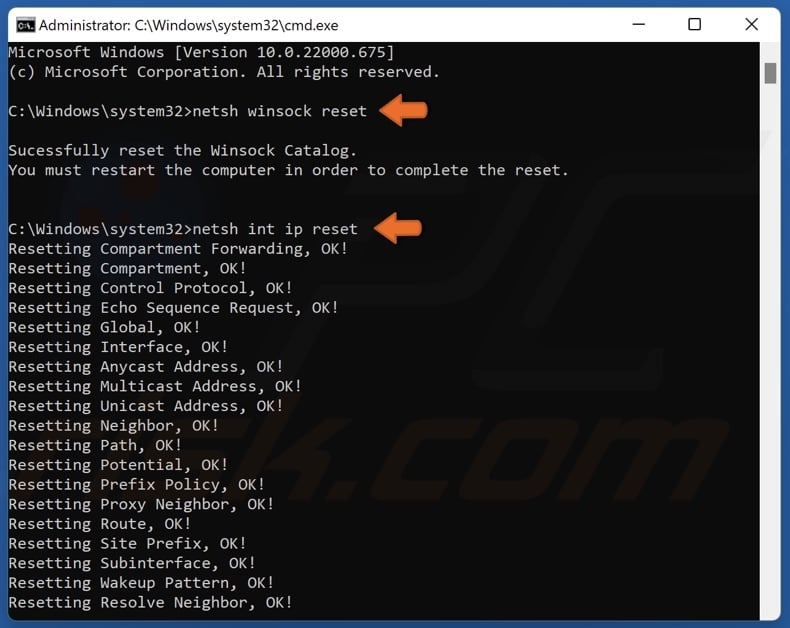
netsh winsock reset
netsh int ip reset
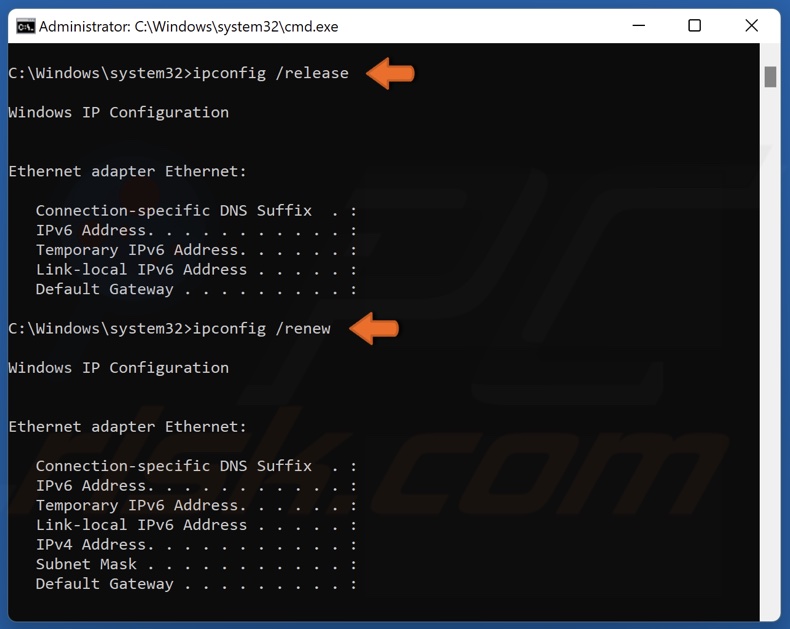
ipconfig /release
ipconfig /renew
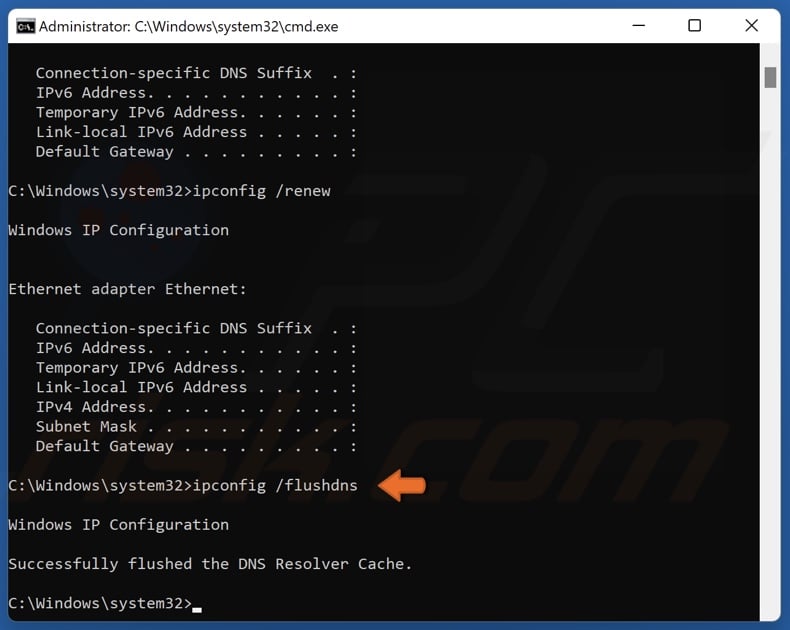
ipconfig /flushdns
4. Close the Command Prompt and restart your PC.
Method 4. Disable Proxy Server
1. Hold down Windows+R keys to open Run.
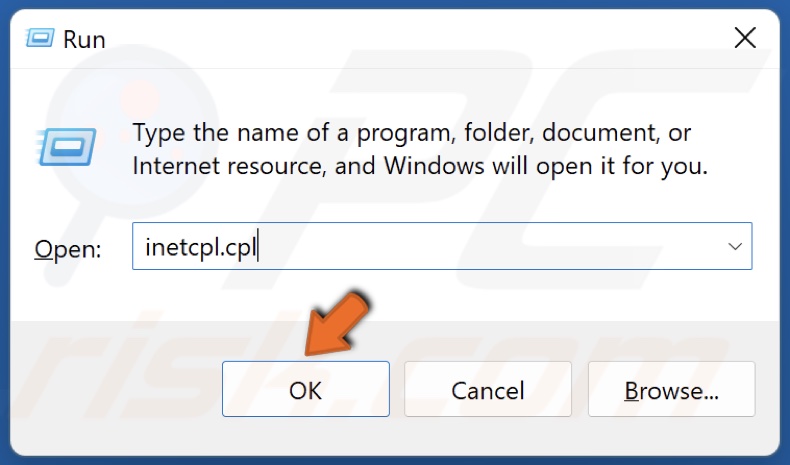
2. In the Run dialog box, type in inetcpl.cpl and click OK.
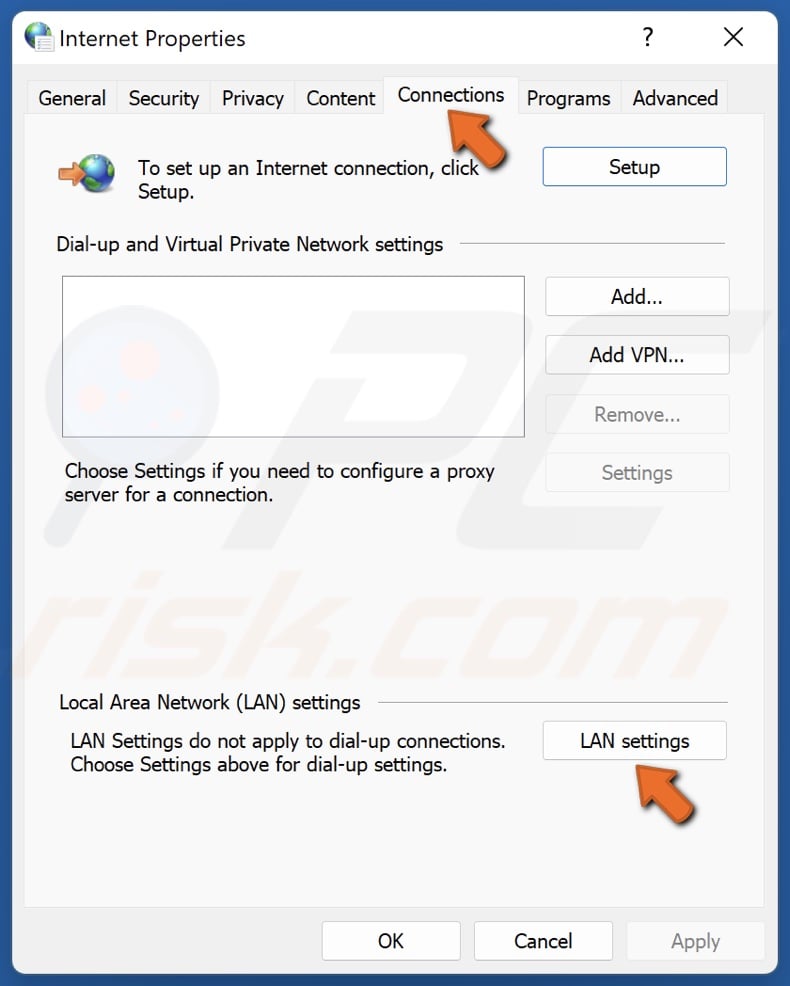
3. Select the Connections tab and click LAN settings.
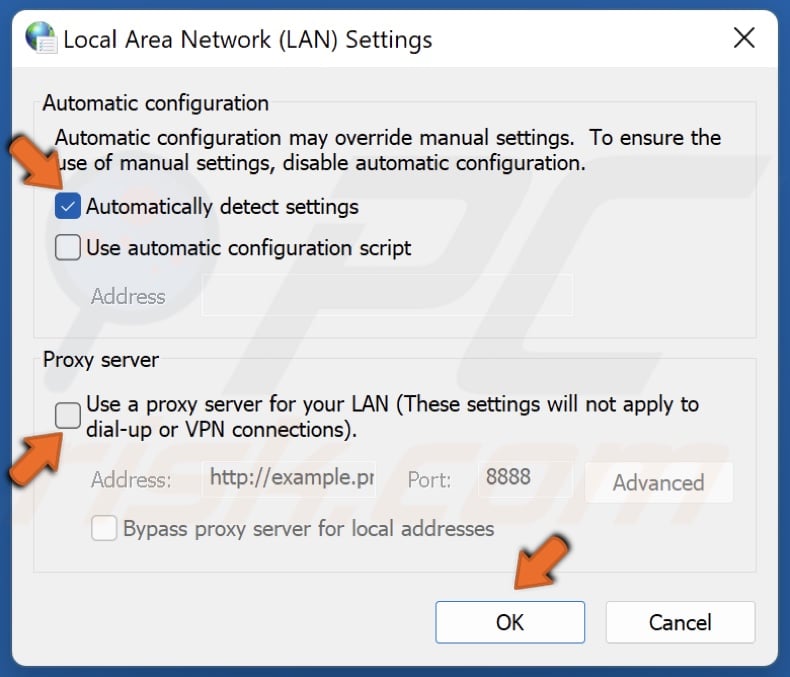
4. Unmark the Use a proxy server for your LAN option.
5. Mark the Automatically detect settings option.
6. Click OK to save settings.
If the solutions provided here didn’t fix the ERR_CONNECTION_CLOSED error, consider switching to another web browser, such as Microsoft Edge or Mozilla Firefox.
Did this article help? Let us know by commenting below.
Share:

Rimvydas Iliavicius
Researcher, author
Rimvydas is a researcher with over four years of experience in the cybersecurity industry. He attended Kaunas University of Technology and graduated with a Master's degree in Translation and Localization of Technical texts. His interests in computers and technology led him to become a versatile author in the IT industry. At PCrisk, he's responsible for writing in-depth how-to articles for Microsoft Windows.

▼ Show Discussion